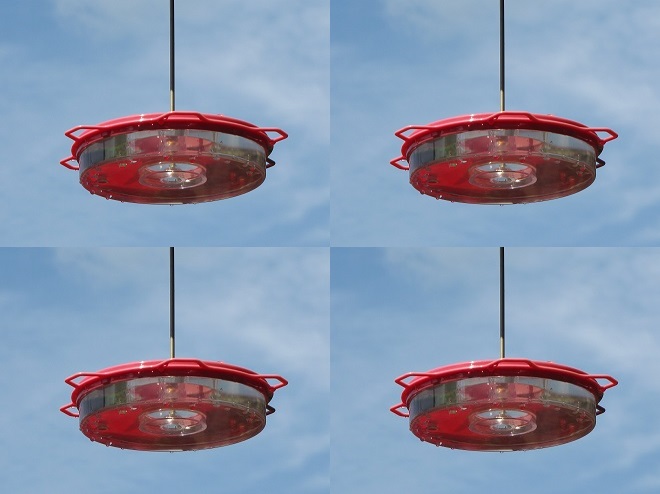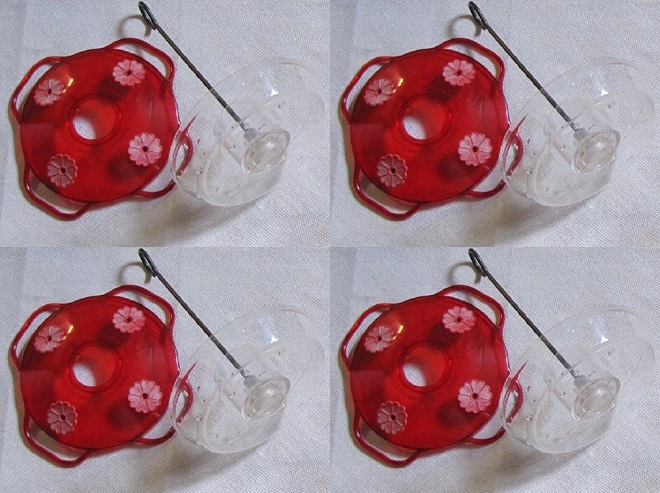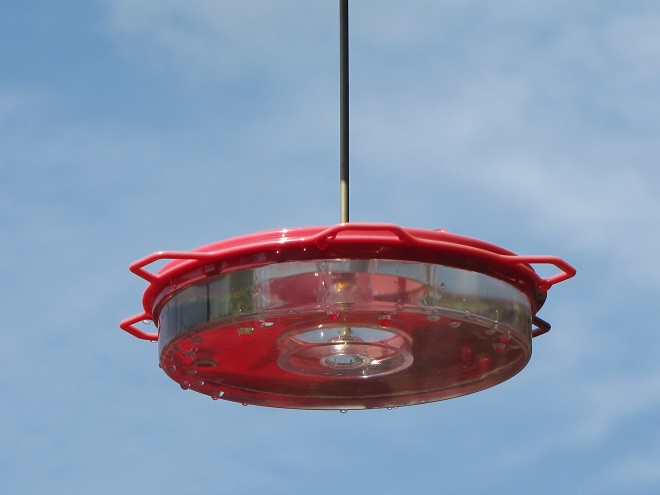Over the coming six weeks or more, Ruby-throated Hummingbirds will be feeding throughout the daylight hours to fuel their long migration to the tropics for winter. With plenty of adult and juvenile birds around, it’s the best time of year to get a better look at them by putting up a feeder.
You may already know the basics—hang the feeder near flower beds if you have them, keep it filled with a mixture of one part sugar to four parts water, and fill the little ant trap with fresh water. And you may know too, that to provide for the birds’ safety you should avoid hanging your feeder near plate glass windows and you should keep it high enough to avoid ambushes by any predators which may be hiding below.
Now here’s a hummingbird feeding basic (a bird feeding basic really) that you may not have considered. For every hummingbird feeder you intend to have filled and hanging in your garden, have a second one cleaned and air-drying to replace it when it’s time to refill. Why? Sugar water, like bird seed when it gets wet, is an excellent media for growing bacteria, molds, and other little beasties that can make birds (and people) sick. In the summer heat, these microorganisms grow much faster than they would in the wintertime, so diligence is necessary. Regularly, on a daily basis ideally, each feeder in your garden should be taken down and replaced with a clean, dry feeder filled with fresh sugar water mixture. The cleaning process should include dumping of the feeder’s contents followed by a thorough scrubbing with soapy water to remove any food residues that, if left remaining, can provide nourishment for growing bacteria. Next, the feeder should be rinsed with clean water to wash away soap and debris. You can sanitize the feeder if you wish, but it is more important to allow it to air-dry until its next use. Depriving mold, bacteria, and other microbes of moisture is a critical step in the process of eliminating them as a health hazard.
A Note of Caution: To avoid cross contaminating the utensils and space you use for preparing and serving meals, it’s important to have a separate work area with brushes, buckets, and other equipment dedicated only to bird feeder cleaning and drying.

So, let’s review. If you’re going to have a hummingbird feeder filled with nectar hanging in your garden, you need a second one—clean, dry, and ready to replace it.

If you’d like to attract more than one hummingbird at a time to your garden, you may want to place a second feeder where the territorial little bird claiming the first as its own can’t see it. Then you’ll need four feeders—two hanging in the garden and two that are clean, dry, and ready to be filled with fresh sugar water to use as replacements.

If you’re in a rural area with good habitat, you may have four or more feeders around your refuge. You’ll need a replacement feeder for each.


Remember, keep your feeders clean and filled with fresh nectar and you’ll be all set to enjoy the Ruby-throated Hummingbirds of late summer. Then watch closely for the cold-hardy western species that visit the Lower Susquehanna River Watershed beginning in October. The occurrence of at least one of these rarities in the Lower Susquehanna River Watershed each autumn is now something of a regular event.


